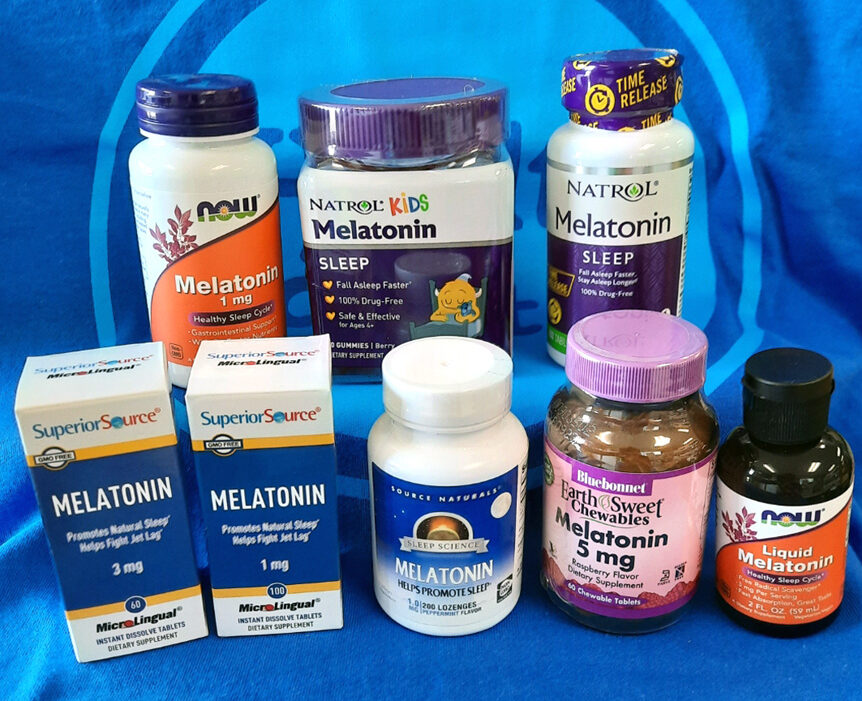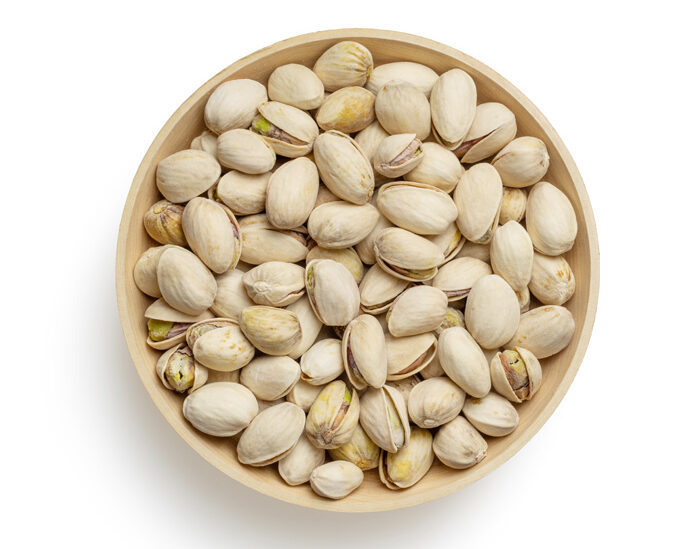Melatonin is a hormone that comes from the pineal gland in humans. It is also produced by bacteria, protozoa, plants, fungi, and invertebrates. (1) Melatonin is a regulator of circadian and seasonal rhythms including the sleep/wake cycle. It also stimulates the immune system and helps to protect cells from harmful substances. (1) The human body naturally creates melatonin at night with the production onset by darkness. (5)
In contrast, light activates the production of cortisol. Cortisol should be at peak production at the beginning of the day. If cortisol levels are high at night sleep issues can be caused. Cortisol can be raised by stressors – including mental, emotional, environmental, and toxic. Additionally, sleep apnea, blood sugar issues, chronic infections and allergies can raise cortisol levels. (2) When addressing sleep issues, it could be very important to look at cortisol and find ways to manage stress.
While melatonin is not a sedative sleeping pill, it can be used to promote a healthy sleep-wake cycle and help one on the path to better sleep. In an analysis of 10 studies involving 1683 adults and children with primary sleep disorders found that melatonin significantly improves sleep in comparison to a placebo. It was found to decrease sleep onset latency (the amount of time it takes to fall asleep), increase total sleep time, and improve overall sleep quality. (4) Primary sleep disorders are those that are not associated with medical conditions, substance use or existing psychological disorders. In one study, actual sleep time, sleep efficiency, non-REM sleep and REM sleep latency all significantly increased in middle aged individuals who took a 1mg dose of melatonin compared to a placebo. (3)
Melatonin is generally considered to be safe with no serious side effects having been reported, even with high doses. (6) However it is not recommended to take extremely high doses. Side effects that could indicate you’ve taken too much include feeling extra drowsy or groggy the next day, dizziness, headaches, nausea, and vivid dreams or nightmare. (5)

Photo by David Billings on Unsplash
Dosage and Timing
A safe dose for adults is between 0.5mg and 5mg. (5) As with most things, starting with a small amount is a good idea. Taking 0.5mg can result in similar amount of melatonin in the bodily plasma as the average natural production of the hormone, depending on the rate of release of the melatonin taken. (6)
Elderly individuals could even start with a dose as small as 0.1mg may be better as older adults may be more sensitive to melatonin. After supplementation, melatonin levels have been found to stay higher for a longer amount of time in adults 55 to 77 years old. (5) This could be because melatonin production naturally decreases with age. (5) While some studies show that it may be safe to administer melatonin to children, caution should be taken as melatonin is a hormone and could affect development. (8)
Attenburrow et al reported that 1.0mg of melatonin taken two hours before bed increased total sleep time and sleep efficiency in healthy adults. (6) The Sleep Foundation recommends taking melatonin an hour before sleep. The timing can depend on what form of melatonin you are taking. Some capsules are made to slowly release while other capsules may quick release. Slow-release better mimics natural melatonin production. (6) Dissolvable tablets and liquid can act more quickly than capsules that must go through digestion. When you take melatonin may depend on what type of melatonin supplement you choose. It is not recommended that melatonin supplements be used during the day.
For example, you could choose to try a 0.5mg to 1mg dose of a slow release melatonin two hours before bed. Or you could get 1mg lozenges, use a pill cutter and take 0.5mg under the tongue 20 minutes before bed or as you lie down. It is important to find the right supplementation for you. Many supplement brands have supplementation recommendations on the bottles or available on their website. Make sure to check with your doctor, particularly about any medications you are taking, before taking melatonin. Consult with a physician to find the proper dose for you.
Liquid or tablet forms of melatonin can be more easily split into smaller doses. For instance, NOW has a liquid melatonin product of which 20 drops equals a 3mg dose. If you would like to take a dose closer to 0.5mg, that would be 3-4 drops. Tablets can be cut into pieces.

Overall, melatonin has been found to be helpful in correcting disturbances in circadian rhythm. It can also be helpful for shift workers and adjusting to new time zones. Melatonin is best used on occasion and with good timing in a dose right for you. Prolonged use of melatonin can aggravate insomnia issues. Too much melatonin can overwhelm receptors in the body which can overwhelm the body and affect the body’s ability to produce and respond to melatonin produced naturally. (8)
Melatonin in Foods

Photo by Mockup Graphics on Unsplash
Many common foods also contain melatonin such as eggs, fish, meat, milk, grapes, tart cherries, strawberries, pistachios, almonds, corn, oats, rice, and wheat. If you’re looking to get more melatonin through diet, pistachios are an excellent evening or bedtime snack as they provide protein (which can help balance blood sugar) and melatonin. One ounce of pistachios can have up to 6mg of melatonin. (7) The classic home remedy of a glass of milk is also a good choice. For dessert, consider including tart cherries!
Lifestyle
Since melatonin production is triggered by darkness, it could be helpful to eliminate bright lights (especially blue or fluorescent) and screen time before bed. Software like f.lux for computers, Night Shift on iPhone and Twilight for Android are designed so that your computer or phone display adjusts so that the screen has a warm color at night. Making your bedroom dark by using items like black-out curtains can also be helpful.
Featured photo by Ashwini Chaudhary on Unsplash
Sources
- Rüdiger Hardeland, S.R. Pandi-Perumal, Daniel P. Cardinali. (2006) Melatonin. The International Journal of Biochemistry & Cell Biology. 38(3): 313-316. https://doi.org/10.1016/j.biocel.2005.08.020.
- Anderson, Loy. (2019, November 35). Melatonin and Cortisol. Thriven Functional Medicine Clinic Newsletter. https://thrivenfunctionalmedicine.com/melatonin-and-cortisol/
- Attenburrow, M.E.J., Cowen, P.J. & Sharpley, A.L. (1996). Low dose melatonin improves sleep in healthy middle-aged subjects. Psychopharmacology 126:179–181. https://doi.org/10.1007/BF02246354
- Ferracioli-Oda, E, Qawasmi, A, Bloch, M. (2013). Meta-Analysis: Melatonin for the Treatment of Primary Sleep Disorders. PLOS ONE. Retrieved from https://doi.org/10.1371/journal.pone.0063773
- Chahine, E. (2021). Melatonin Dosage: How Much Melatonin Should You Take. Sleep Foundation. Retrieved from https://www.sleepfoundation.org/melatonin/melatonin-dosage-how-much-should-you-take
- Sack, R., Hughes, R., Edgar, D., Lewy, A. (1997). Sleep-Promoting Effects of Melatonin: At What Does, in Whom, Under What Conditions, and by What Mechanisms?. Sleep. 20(10):908-915. Retrieved from URL.
- Wartenberg, L. (2021). What’s the Melatonin Content of Pistachios?. Healthline. Retrived from https://www.healthline.com/nutrition/pistachios-melatonin#melatonins-effects
- Syam P. (2015). The Dark Side of Melatonin. Huffington Post. Retrieved from https://www.huffpost.com/entry/the-dark-side-of-melatoni_b_8855998
The information provided on this site is intended for your general knowledge only and is not a substitute for professional medical advice or treatment for specific medical conditions. You should not use this information to diagnose or treat a health problem or disease without consulting with a qualified healthcare provider. Please consult your healthcare provider with any questions or concerns you may have regarding your condition.
